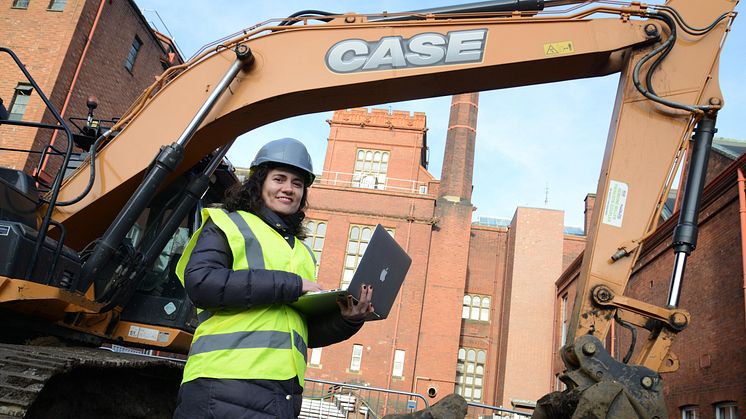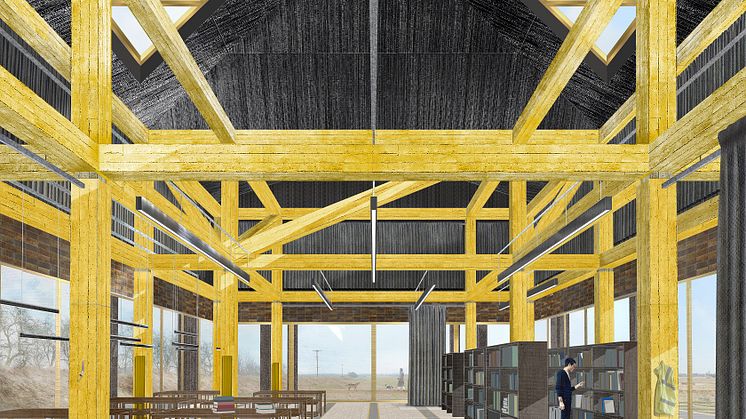
Press release -
Mathematical model could revolutionise construction site productivity
A new system for increasing productivity during construction projects has been created by an academic at Northumbria University, Newcastle – with the potential to save construction companies and contractors large amounts of time and money.
Using innovative mathematical modelling, Dr Laura Florez has created a computer model, which ensures teams of construction workers are allocated more efficiently on a building site by taking into account the skills and personalities of individual workers, conditions on site, and current stage of the build.
The model – a user-friendly computer program – has been tested using data from a large residential building, comparing the traditional allocation techniques used by the site manager with that proposed by the model. The results showed that by using the model, the site manager could realise a substantial reduction in the time taken to complete the project that eventually translated into cost savings.
The findings of Dr Florez’s research have been published in the world-leading journal Computer-Aided Civil and Infrastructure Engineering, and she is now looking for construction companies to work with to test and develop her model further.
Dr Florez is a Senior Lecturer within Northumbria’s Department of Architecture and Built Environment, ranked as one of the top 200 in the world in the 2017 QS World University Rankings by Subject.
Speaking about her research, she said: “As anyone in the construction industry knows, the configuration of gangs constantly changes and the site manager is responsible for scheduling and allocating gangs to balance between the complexity of the job and the need for quality and high production rates.
“My model takes into consideration characteristics of masons and site conditions in order to determine the right gang to build the right wall in order to increase productivity. With this computer programme, site managers are not only able to identify working patterns for each of the masons but also optimal gang formation, completion times, and labour costs.”
Workforce planning and scheduling are recognised as among the biggest challenges facing construction companies, due to the site dynamics and the diversity of its workers. A variety of computer programmes and techniques have been used to solve problems relating to scheduling and allocation of workers, including multi-objective optimisation, genetic algorithms, dynamic programming and ranking methods.
However, up until now there have been limited computer programmes for labour allocation for the masonry industry. Dr Florez’s model aims to expand the set of decision-making tools available to masonry contractors for scheduling and allocating masons and proposes a model that combines sound technical methods with real-life implications in masonry construction.
Masonry processes, like many other activities in construction, involve little to no mechanisation, with gangs made up of masons with diverse skills, capabilities, and personalities.
Dr Florez said: “A proper allocation model would have to consider the characteristics of masons and how to relate these characteristics and site conditions to select the right gang for the right wall considering the project constraints, for example the availability of workers and precedence relations between tasks and budget, to ensure minimum time and increased productivity.”
During the model development, Dr Florez spent more than a year on site visiting various commercial and large residential buildings, understanding the construction processes, documenting the allocation of labour and productivity and interviewing contractors, site managers, foremen, masons, and personnel on site.
Dr Florez said: “That time observing and talking to numerous personnel about how they work on site gave me a thorough understanding of masonry operations that I could have not comprehend otherwise. We as academics need to work together with industry. Construction companies and contractors collect large amounts of detailed information and there are multiple ways to use quantitative and qualitative valuable data to increase productivity, form effective gangs, and better manage and plan future projects”.
The computer model has been tested against a real-life case study – a 14-story residential building, featuring a variety of one, two, three and four bedroom flats, as well as a basement and underground parking garage. The façade of the building used is fully made of coloured grey brick with interior columns and walls that are also made up of brick.
Using the data from the building, Dr Florez ran the model, comparing the solution produced to the real-life outputs. This showed that, had the project used the computer model, the site manager could in the space of one week have saved 6.8% of the cost, due to an alternative configuration of gangs, resulting in increased productivity and a shorter build time.
Dr Florez’s research article, entitled Crew Allocation System for the Masonry Industry, has been published in the world-leading journal Computer-Aided Civil and Infrastructure Engineering (Volume 32, Issue 10, Oct 2017, pp 874-889), which features articles on novel computational techniques and innovative applications of computers, acting as a bridge between advances being made in computer technology and civil and infrastructure engineering. In recognition of her initial results and innovative contributions to the construction industry, Dr Florez was the sole recipient of the Best Student Paper Award by the Institute of Industrial and Systems Engineers (IISE) in 2014 and was invited to the national training centre of the International Masonry Institute (IMI) in Maryland, USA.
Dr Florez is now looking for construction companies and contractors to work with to test and develop her model further for masonry construction and other construction trades. She is particularly interested in hearing from businesses and PhD students and Post-Docs interested in collaborating and establishing a Knowledge Transfer Partnership based on her research.
To find out more, please contact Dr Florez by emailing laura.florez@northumbria.ac.uk or call 0191 227 3306.
For more information about courses available within Northumbria’s Department of Architecture and Built Environment, please visit https://www.northumbria.ac.uk/about-us/academic-departments/architecture-and-built-environment/
Topics
Categories
Northumbria is a research-rich, business-focused, professional university with a global reputation for academic excellence. To find out more about our courses go to www.northumbria.ac.uk
If you have a media enquiry please contact our Media and Communications team at media.communications@northumbria.ac.uk or call 0191 227 4604.











